History
Tempting though it is to start with Symbian in the Nokia Communicator history, the first in the line was actually the Nokia 9000, described on Wikipedia like this:
The first product in Nokia's Communicator series, introduced in 1996. The phone was large and heavy (397 g) in comparison with its modern equivalent the Nokia E90. The Communicator part is driven by an Intel 24 MHz i386 CPU. It has 8 MB of memory, which is divided between applications (4 MB), program memory (2 MB) and user data (2 MB). The operating system is GEOS 3.0.
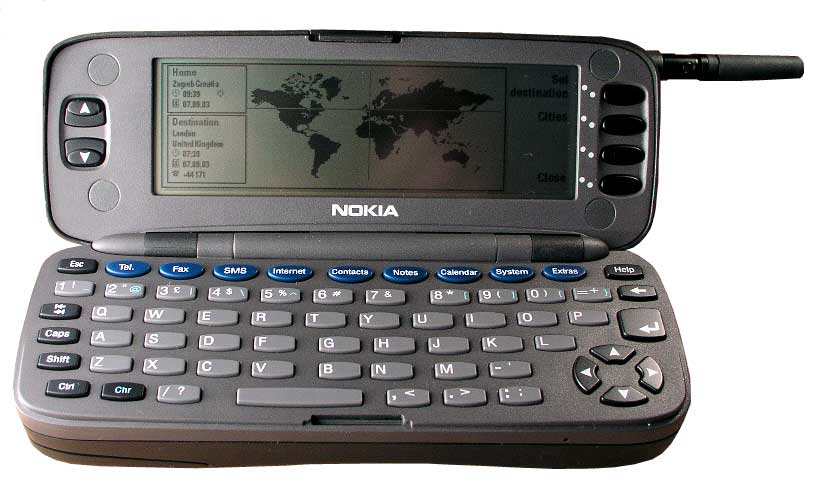
Never mind the outrageous weight and mindbogglingly low specs (24MHz, plus 8MB memory for all apps, OS temporary files and user data!!!), the concept was the main thing. From Nokia's own press release of the day:
The Nokia 9000 Communicator provides a wide range of mobile communications services as well as personal organiser functions. The product combines a GSM phone with applications like fax, e-mail, short messaging and Internet access. It also includes the most useful organizer functions; a calendar, an address book and a calculator. All of this is available in a sophisticated, pocket-sized unit.
The launch of the Nokia 9000 Communicator at the CeBit trade fair last March caused a stir in the media, among potential customers as well as service and software companies all over the world. This strong response shows that there is a wide need for this kind of integrated communications device. For the first time, unique voice and data functionality are available in a pocketable-sized unit...
Yes, yes, that's 'fax'. And 'short messaging' touted as a major feature. But remember this was 1996 and we were still six years from even the Nokia 7650. In practical terms, the form factor was unique, with the Communicator opening up to reveal a full (and surprisingly useable) qwerty keyboard, a full width display, dedicated application shortcut keys, and so on. The biggest problem was that the 9000 was so thick, even allowing for the age. After all, when this was announced, the Psion Series 3c was ruling the PDA world, far thinner and lighter, yet with surprisingly similar form factor. If Psion could do it, why not Nokia?
Why not indeed, which is why the Nokia 9110 was brought out in 1998, just over half the thickness and weight - and this is thought, by many, to be the first real mass market 'Communicator'.
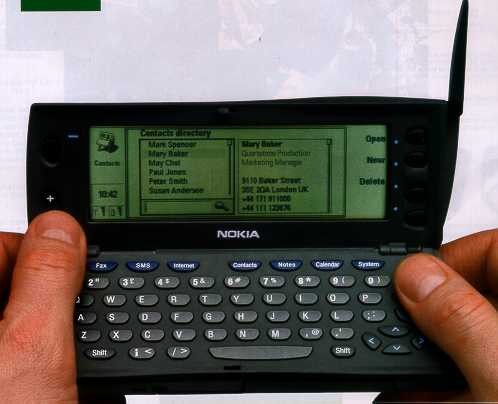
Of note for this article was that the 9000 and 9110 both ran GeOS, but the arrival of Symbian on the world scene in 1997, partly funded by Nokia, meant that a tie up of the latest multitasking handheld/smartphone OS and the Communicator idea was somewhat inevitable. The result was the colour-screened Nokia 9210, launched in 2000 and the first Communicator to be covered in any detail on All About Symbian (or All About ER6, as it was then known - ER6 standing for Epoc Release 6, effectively the version of Symbian that the 9210 was based on).
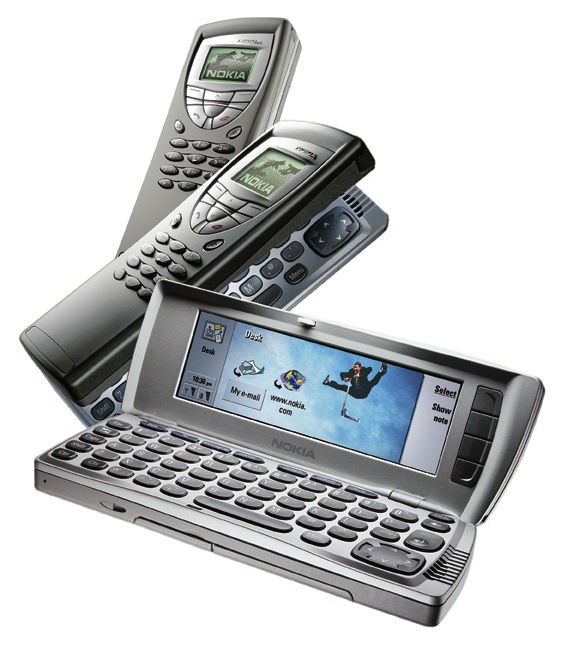
The 9210 tried to include much of Psion's OS and applications but within the (luckily rather similar) Communicator form factor and with the 'Series 80' interface radically reworked from the touch-based Psion Series 5/EPOC to resemble the GeOS interface of the earlier Communicators. This repurposing of an interface, regardless of the underlying OS, is a theme that Nokia came back to several times in the next decade, usually with unsuccessful results.
The 9210 did OK though, with a tweaked sequel, the 9210i following in 2002, with more internal memory and basic Flash support in its web browser.
The form factor continued resolutely, with the Nokia 9500 in 2005 being slightly smaller and lighter again, plus there was Wi-fi and even a camera. Although on the surface, this ran Series 80 still, in fact it was a reskinned version of a skunkworks Symbian project called Hildon. A smaller and lighter version still, the Nokia 9300, had all the same characteristics again, but is not always included in the Communicator pantheon by Nokia purists, somewhat unfairly. The 9300 didn't have Wi-fi at first, which was a bit omission for a Communicator, which traditionally had the highest specifications Nokia could muster. A 9300i added Wi-fi in due course, rectifying the situation.
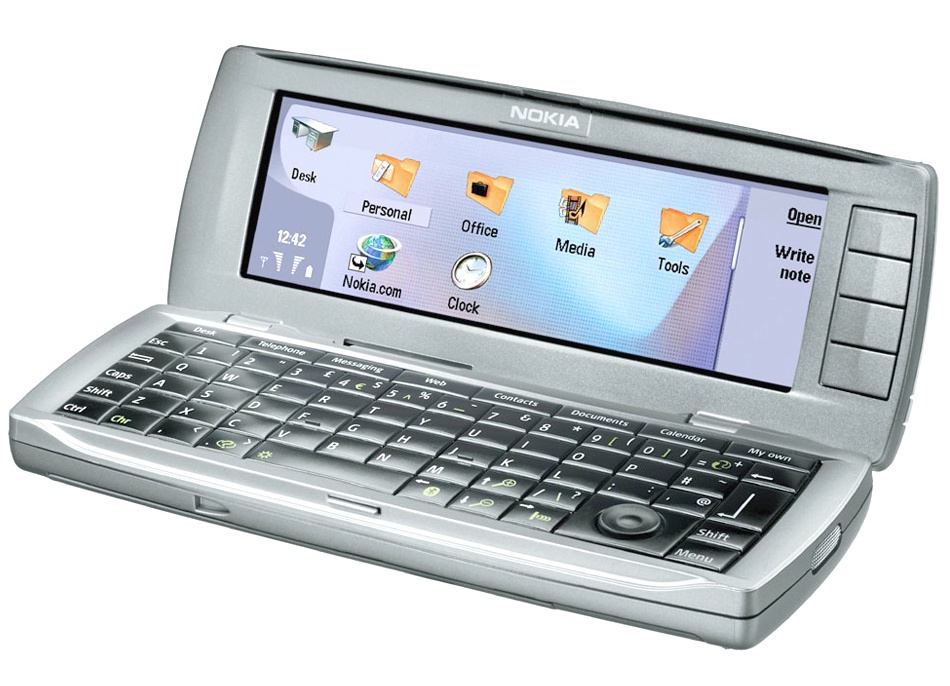
Jump forward two more years and the ditching of the Series 80/90/Hildon projects in favour of the mass market Series 60 interface, now shortened to just 'S60'. The rationalisation involved angered many, but Nokia sought to appease the Communicator faithful with the 2007 E90, offering the classic form factor but with a reworked landscape version of S60 3rd Edition Feature Pack 1 at its heart. The E90 did add 3G and GPS to the Communicator line for the first time, plus a super camera and great stereo loudspeakers. Despite these, the E90 wasn't liked by many, not least because it wasn't backwards compatible with Series 80 applications. Plus the adaptation of S60 to a 800 by 352 pixel landscape screen had (to put it kindly) a few quirks.
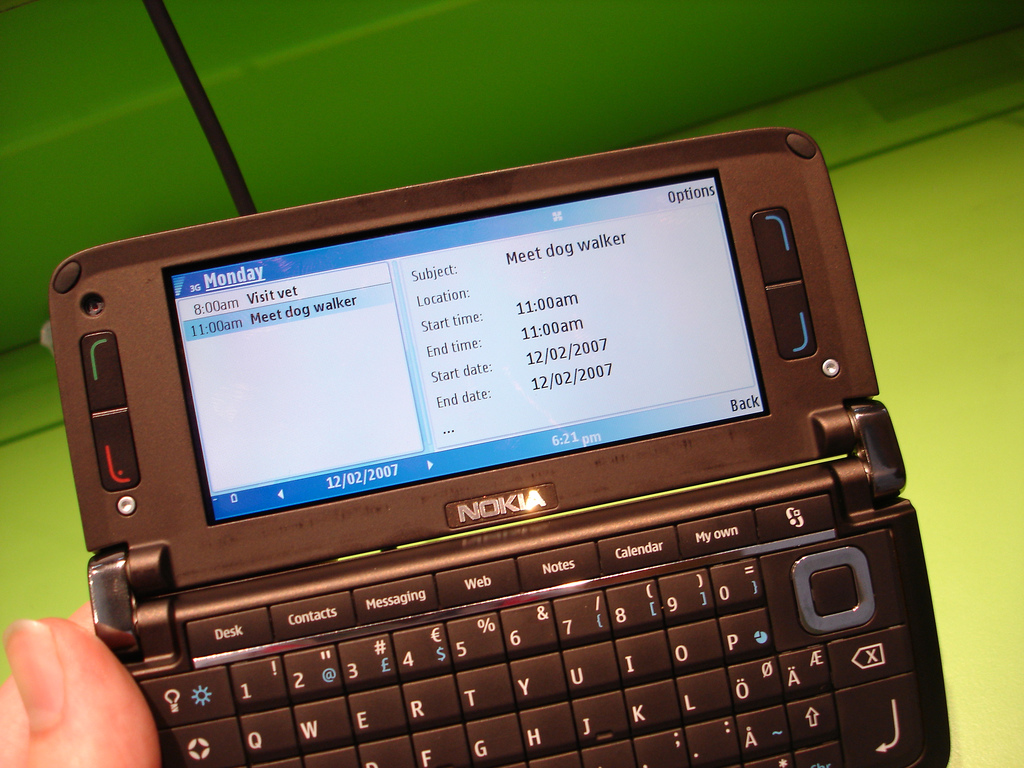
Regardless, the E90 had its fans, myself among them. Yes, it seems slow and clunky now in 2012, but in 2007 it was cutting edge functionality, mirroring the huge selling N95 but for business users.
Defining the Communicator
But was this the last ever Communicator? Now there's a tricky question. Let's consider some of the defining attributes of what makes a Nokia Communicator:
- Form factor: Usually clamshell, so that there can be a simpler UI for use one-handed as a phone and a more function-rich landscape UI for use when opened, with two hands.
- Shortcut keys: Dedicated keys to switch instantly to running instances of (or, if not running, to start up) the main PIM and communication applications. In practice, these were a huge time saver and were endearing to Communicator users.
- Top specifications: For their day, most of the Communicators represented cutting edge functions, the E90 with its GPS and voice-guided sat-nav being a good example, in my opinion.
- Focus on email and communications (naturally!), over and above consumer features like video, music, and so on.
- Flexibility: Never mind proprietary sealed phones, Communicators were always about flexibility. The mini-laptop in your phone. Making up this flexibility were hardware attributes like a proper (and fully user accessible) file system, memory expansion slots, the largest battery available and always replaceable. So you could go anywhere, be as independent as possible and be prepared for any scenario. All in your phone - hey you can see why people loved these things....
I contend that the five attributes above are still pretty desirable in 2012, so how come we haven't had an official Nokia Communicator since 2007?
Communicator candidates?
Here are four candidates, in my eyes, at least:
- Nokia N97, launched at the very end of 2008, though not available until summer 2009. Its branding was all 'Nseries', with Nokia focussing on its great camera, touchscreen and general multimedia, but I'd argue that the form factor, keyboard and use of extreme specifications (for the time) made it a Communicator candidate, satisfying four of the criteria above (no shortcut keys). The Achilles heel, of course, was that the 'top specifications' failed to include RAM and system disk memory, which meant that the N97's already buggy launch software started to bog down badly once the OS got updates and fixes. A N97 mini, launched late in 2009, fixed the system disk issue, but was cut down in terms of other specifications.
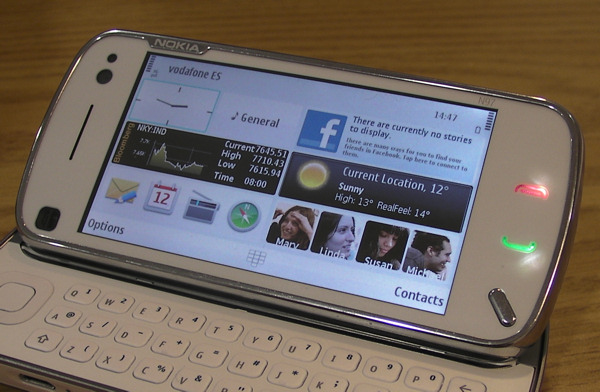
- Nokia E75, launched at the start of 2009, arguably satisfies all five of the criteria above, though its form factor transformation was in sliding straight out rather than using a traditional hinge. The E75 was always the consummate all rounder smartphone for the AAS team - with, literally, nothing it couldn't do to some degree, though the screen size and resolution ultimately failed to impress most observers at the time. The ultimate 'jack of all trades and master of none'?
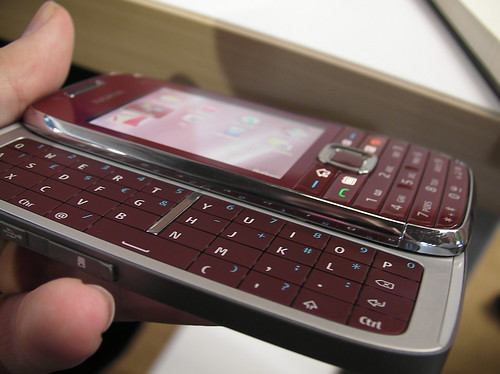
- Nokia E7, launched in 2010 (though not available until early 2011) with the tagline 'The ultimate business smartphone'. In my launch story, I even called it a Communicator, recognising some of its DNA. The E7 still has its place in the smartphone pantheon because of its rather excellent physical keyboard, but it only satisfies two (1 and 4) of the criteria above, having no shortcut keys, less than cutting edge overall specs and sealed memory and battery.
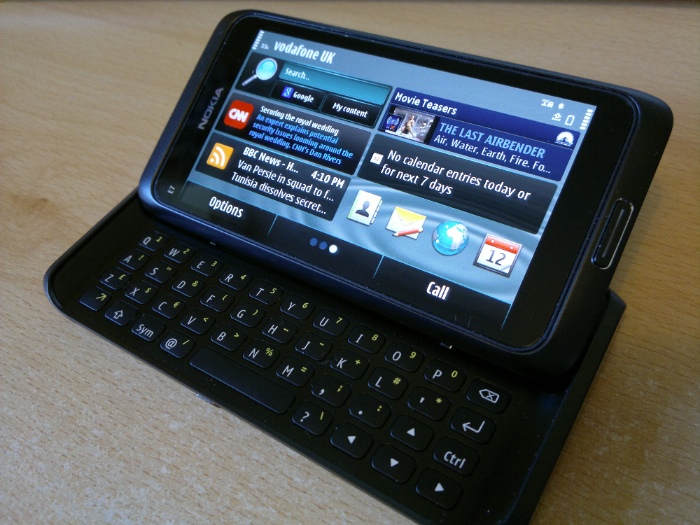
- Nokia E6, launched in 2011 with the somewhat uninspiring tagline 'All you need from a smartphone in one compact package', a somewhat left-field Communicator candidate, but worth considering here. In fact, amply satisfying four criteria (2 to 5) above (there's obviously no 'transformation' angle here), it's arguably much more of a Communicator than the E7 above. Its premium build quality lends extra credence to its claim. It's tempting to then think back to the E6's predecessors, the E72 and E71... and even the E61i, but I think that's stretching the point a little too far. The E72 was too poorly specced overall and wasn't built that well, the E71 comes closest, but the QVGA screen resolution rankles a bit, even today.
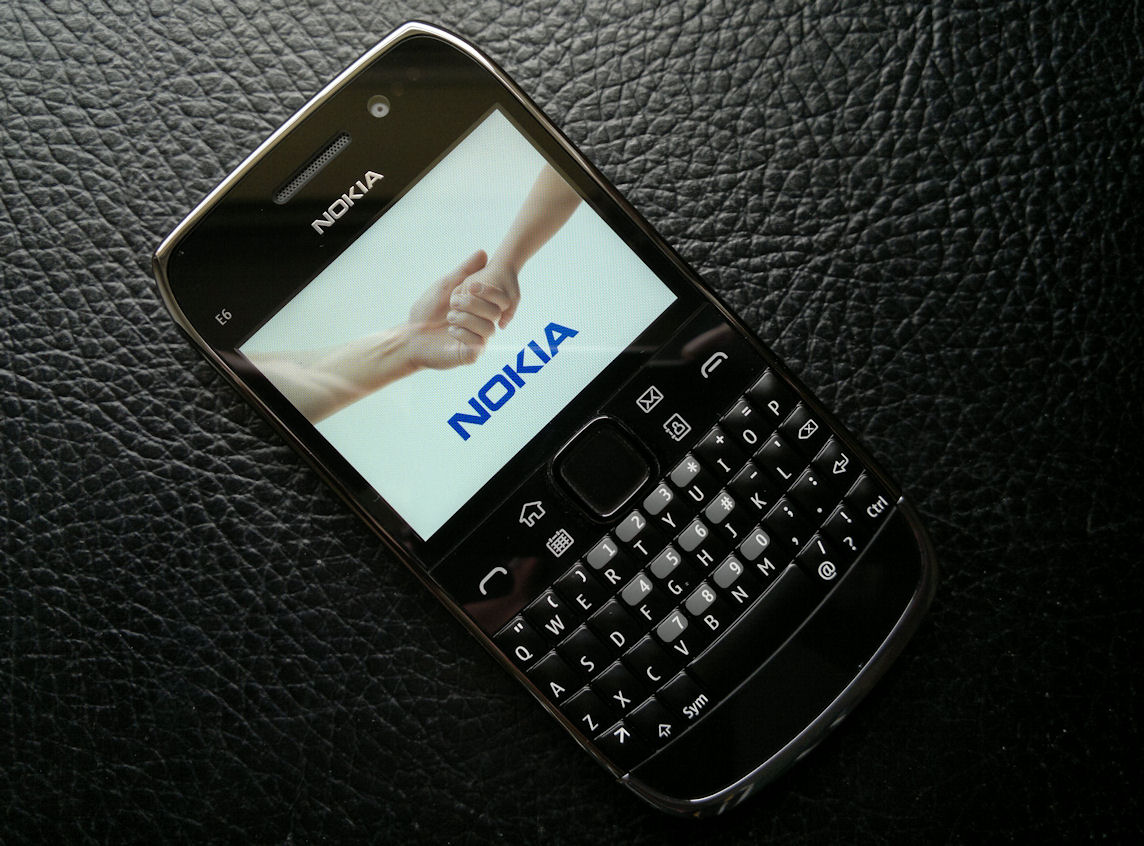
All of the candidates are worthy, in different ways. You can see, for example, why I keep being drawn back to the N97 (playing with custom firmware, in an effort to eke more out of the device's physical memory), the E7 (battling its Wi-fi bugs!) and E6 (a fondness for the form factor and that incredible BP-4L battery).
The E75's interesting because I don't even own one anymore and I'm starting to get pangs for it again. In terms of the Communicator criteria above, it should be the closest thing in recent years to the classic concept. Was the E75 really the last Nokia Communicator, yet unrecognised as such at the time? Or should the E6 be considered as the last one of its kind?
Or am I being too generous? Comments welcome - should the classic E90, from five years ago, be the last true Nokia Communicator? Or is even that being too generous again - maybe, in your eyes, the menu-driven Series 80 interface was the defining attribute of the Communicator, which means that we haven't had one now for getting on for eight years.
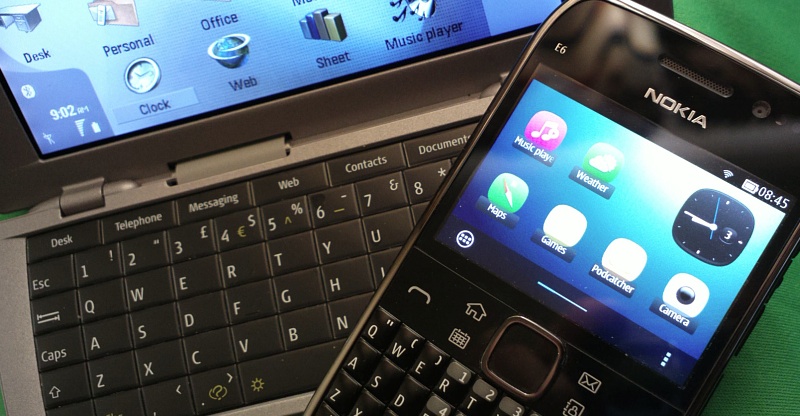
This is (not) The End
I refuse to declare the Communicator idea dead though. Despite the current industry love of large-screened touch slabs, I'm convinced that there's room in the market for a transforming, top specification smartphone with fabulous QWERTY keyboard and unrivalled flexibility.
I'd love Nokia to be the company that makes it, but even that, as they say, is negotiable! Devices like the HTC 7 Pro (running Windows Phone) and Desire Z, like the Motorola Pro+, perhaps like the RIM Blackberry Bold 9900, all show I'm not totally alone here. What about you?
No hay comentarios:
Publicar un comentario